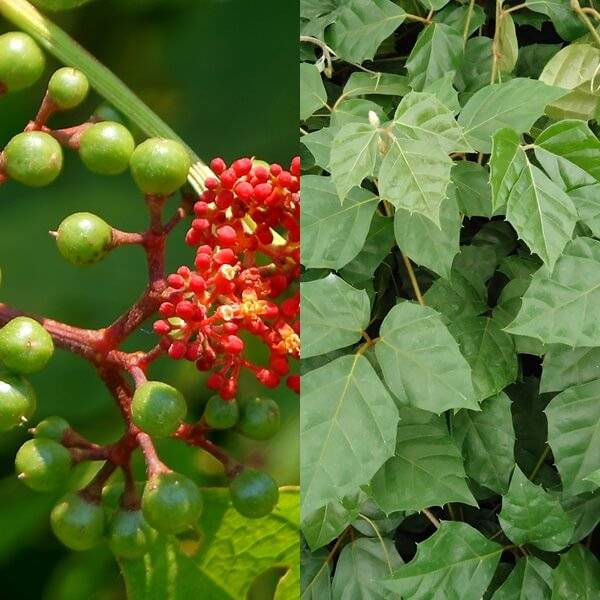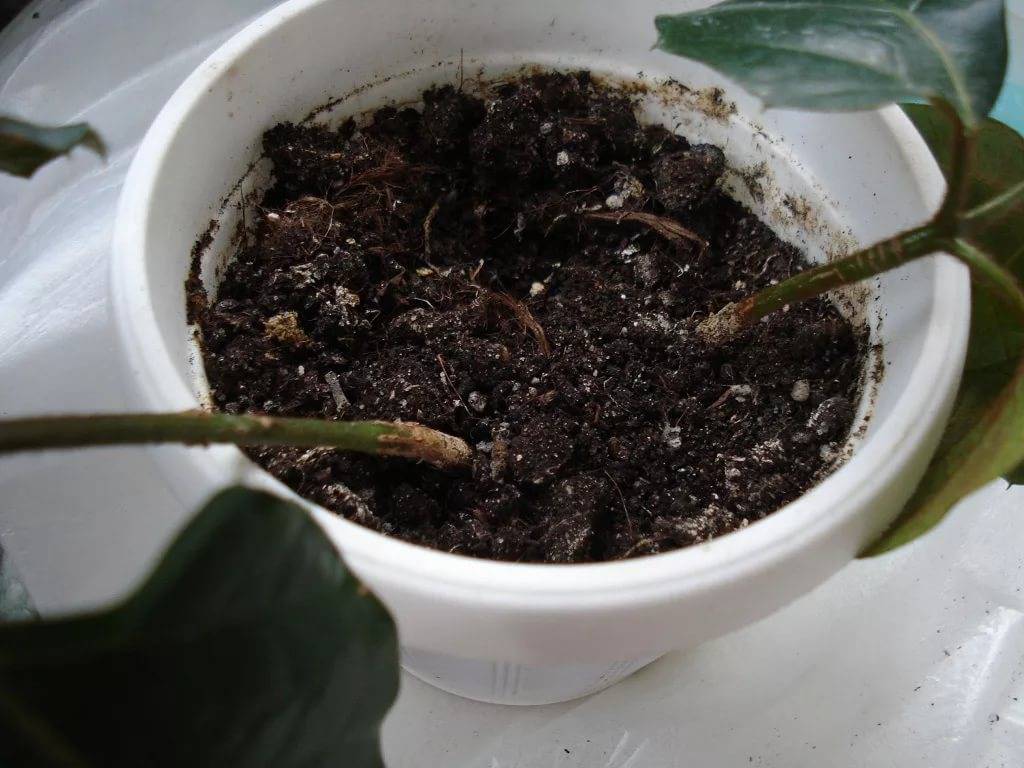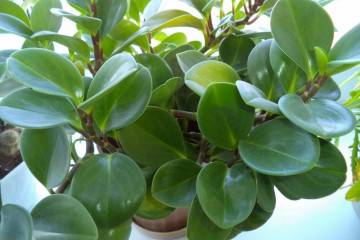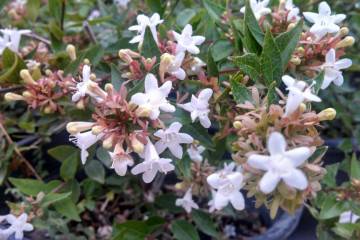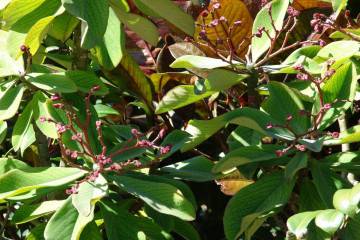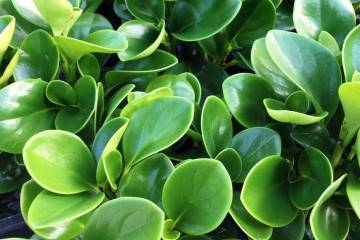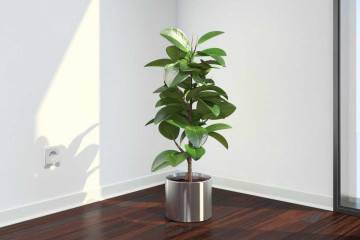Cissus - home care
Content:
The houseplant cissus is sometimes called the miniature liana. With proper care, it grows quickly. There are different types of cissus, which differ in the size and shape of the leaves.
What does a plant look like
Cissus is found naturally only in tropical and subtropical forests. Especially common in Australia, Africa, South America. Different species may have distinctive features, but they all have one thing in common - vines.
Some species can grow in dry areas. They are distinguished by a thick stem and large tubers.
A close relative is the roicissus, caring for him at home is very simple. In nature, it grows only in southern Africa.
Cissus: home care
Cissus requires easy care. Flower pots can be placed in offices, apartments, on glazed balconies. A novice florist can look after such vines.
Temperature
Cissus is an indoor grape, so it likes moderate warmth. In summer, it is necessary to adhere to indicators of 18-25 ° С, during the rest period - 18 ° С. In autumn, winter and spring, it can withstand small drops of up to 10 ° C, but only on condition that this does not last long.
It is better to put the pot in a place where there will be no drafts. From autumn to spring, a dormant period is maintained so that the plant can rest and gain strength.
Lighting
A bright and diffused light is required, the specific requirements depend on the type. Cissus Antarctic needs a little shading, so it can be placed in the hall and bathroom.
Cissus rhomboid needs bright light. With a lack of lighting, it stops growing.
Watering
Due to its rapid growth and a large amount of greenery, it needs abundant watering.
The pot should have drainage holes to help prevent moisture stagnation. For irrigation, it is better to use water that has been purified through a filter or settled for a day.
In summer, it is required to water the plant 3-4 times a week, in winter, it is necessary to limit it to 1-2 waterings.
Spraying
Anyone can take care of cissus, but for this he needs to adhere to certain recommendations. The plant needs a high level of moisture, so in the summer, cissus is sprayed twice a day.
In winter, the number of sprays is reduced to once a day.
Humidity
Cissus is a tropical plant that needs a lot of moisture. Therefore, in the warm season, once every two weeks, the flower pot is washed under a warm shower.This refreshing treatment will have a beneficial effect on the growth of cissus.
The main property of the plant is the rapid increase in the length of the vines. Leaves can be wiped with a damp sponge to remove dust and increase moisture levels.
Priming
Cissus does not require a lot of soil, so any all-purpose mix from the store will do. You can mix the primer yourself. To do this, you need to take in equal parts:
- leafy ground;
- turf;
- sand;
- humus;
- peat.
All components must be mixed and used to plant cissus.
Top dressing
Without nutrients, cissus will quickly dry out and slow down in growth. Therefore, from May, the plant needs regular feeding. For this, complex mineral fertilizers are used.
Fertilize once a week until the end of September. From October to May, the plant does not need feeding, since it is in a dormant period.
When and how it blooms
Cissus can bloom, but unattractive and unattractive. Inflorescences are collected in an umbrella, small flowers of white or yellow color do not stand out against the background of the leaves.
- Types of flowers. Simple inflorescences, collected in a brush. When pollinated, they turn into black or red berries.
- Flower shape. Flat, flowers are white or yellow. Their size does not exceed 5-8 mm.
- Flowering period. At home, it blooms extremely rarely, most often it occurs during the growth period, that is, from May to the end of September.
Pruning
To stimulate active growth, cissus must be cut off once a year. This should be done in May before the start of the growing season. Old, overly elongated vines are shortened by a third of the length. Young shoots need to be pinched, as this will allow them to branch better.
Reproduction methods
There are several ways to propagate a plant. The most popular is cuttings, but some growers prefer to divide the bush or germinate seeds.
Propagation by cuttings
It is convenient to use this method during pruning. To do this, you need to cut off a shoot about 10 cm long. You can root the cutting directly in the ground. To do this, you need to take a special mixture in the store, which contains a large amount of peat and sand.
You can plant up to four cuttings in one pot. It is imperative to control soil moisture and maintain a temperature of about 25 ° C. This breeding method is considered the most effective.
Dividing the bush
An adult, overgrown bush is easier to divide into several parts. To do this, several shoots must be carefully separated from the roots during transplantation. For a new seedling, you need to shorten the vines, otherwise all my strength will be spent on building the crown.
Germinating seeds
Thus, the arctic cissus is propagated, but this method is the most difficult. In April, the seeds are planted in a peat-soil mixture, slightly deepening them in the soil and sprinkling them with soil on top.
The seedlings are covered with glass or a plastic bag, this will create the effect of a greenhouse. It is necessary to control the level of soil moisture, as excessive drying out will lead to the death of seedlings.
Ventilate the pots once a week. The first shoots should hatch in two months, as soon as two or three leaves appear, the seedlings are planted in separate pots. Their diameter should not exceed 7 cm.
Transfer
Various diseases in plants appear due to improper care, including a cramped pot. Therefore, before reaching the age of five, cissus must be transplanted every year.
Young plants (up to five years old) are transplanted using the transshipment method. To do this, the flower is carefully removed from the pot with an earthen lump and placed in a new container. The pot should not be very large, the optimal size is 1-2 cm larger than the previous one.
Possible problems
Cissus birch has an average degree of resistance to various diseases. Many problems arise from improper care. For example, leaf spots may indicate dry air.
Pests
In dry air, a spider mite appears. It can be detected by the appearance of light specks on the leaves, over time, the affected area will become more and more until the leaf is completely dry.
You can get rid of a spider mite with a soapy solution. They need to process all the flowers at home, not just cissus. You can use ready-made products such as acarin or fitoverm.
Claw mites can also infect cissus. In this case, young shoots stop growing, small leaves curl up and scabs appear on the brown stems. Phytoverm treatment is required.
If aphids are found, it is necessary to treat the plant with tobacco dust or antitlin. All damaged areas must be cut off. You can wash the cissus with soapy water.
Other problems
With improper care, cissus can fall off leaves, rot roots and much more. In this case, you need to carefully examine the plant for the presence of pests and analyze the conditions of detention.
If the leaves have fallen sharply and massively, then the reason may be too high an air temperature, a draft, or sudden temperature fluctuations.
In winter, cissus hardly grows, and this is normal. If this happens during the growing season, then the whole point is in the lack of nutrients in the soil. It is necessary to start fertilizing the soil with complex mineral fertilizing.
By the state of the leaves, you can understand mistakes in care. If they are yellow, then this is a sign of insufficient moisture and nutrient deficiency in the earth. Brown spots indicate a lack of nitrogen and phosphorus.
Shoots can dry out due to waterlogging of the soil. This is often accompanied by leaf fall. It is necessary to transplant the cissus into another pot with new soil and make good drainage.
Some diseases
If the stems and leaves are covered with a white coating, it is powdery mildew. If the plaque is removed, a brown surface will appear underneath. Fungal disease should be treated with fungicides such as phytosporin.
Yellow-brown spots with clear contours occur with angular spotting. The affected leaves must be removed, and the plant must be treated with Bordeaux liquid.
Flower types
It is better to look at the correct names of plants in Latin, as it is more reliable. Several types of cissus are grown at home, each of which is unique.
Popular types for apartments:
- Antarctic cissus (Cissus Antarctica) is one of the most common. The leaves are oval with a serrated edge, the outside is dark green and glossy, the inside is lighter. Branches are velvety, brown;
- Cissus rhomboid (Cissus Rhombifolia) grows intensively and has a complex leaf shape. The outlines of the leaf resemble rhombuses, which is why the plant was given such a name;
- Cissus amazonica is distinguished by elongated pointed leaves of a silvery-bluish hue. The stems are bright purple in color. The species is very demanding to care for;
- cissus striata is distinguished by reddish leaves that alternate with green ones.This unusual combination gives the plant a striped color;
- Cissus varicoloured is attractive with bright color of leaves. There are silvery stripes all over the surface, the outside is purple and the inside is dark green;
- Cissus cactus is not like other species and is a succulent. Long stems have four edges with tiny leaves in internodes. Therefore, such a plant is also called quadrangular cissus.
Also, the roicissus birch is mistakenly called in some books. Instead, it is often referred to as ordinary cissus.
Real cissus, whatever you call it, is a spectacular representative of the domestic flora. He does not need much, only periodically water and apply top dressing. And then the flower will sparkle with all tones of green.



